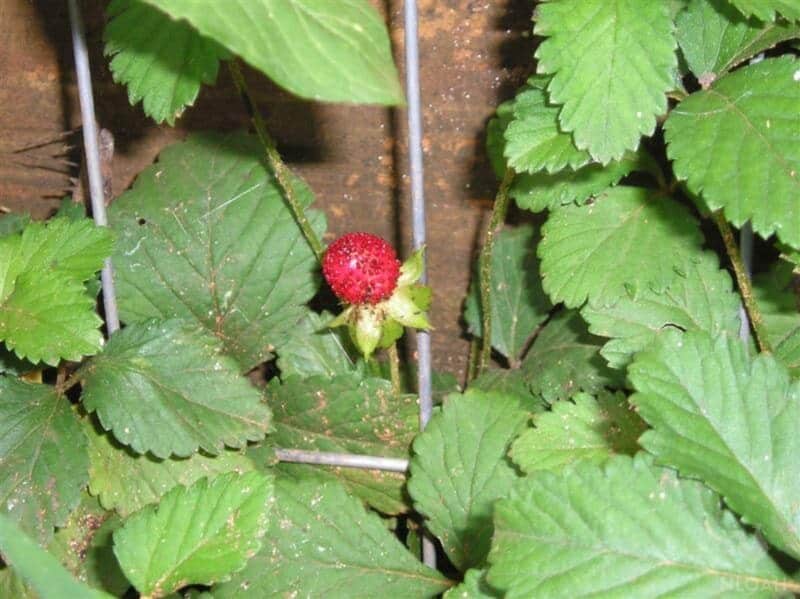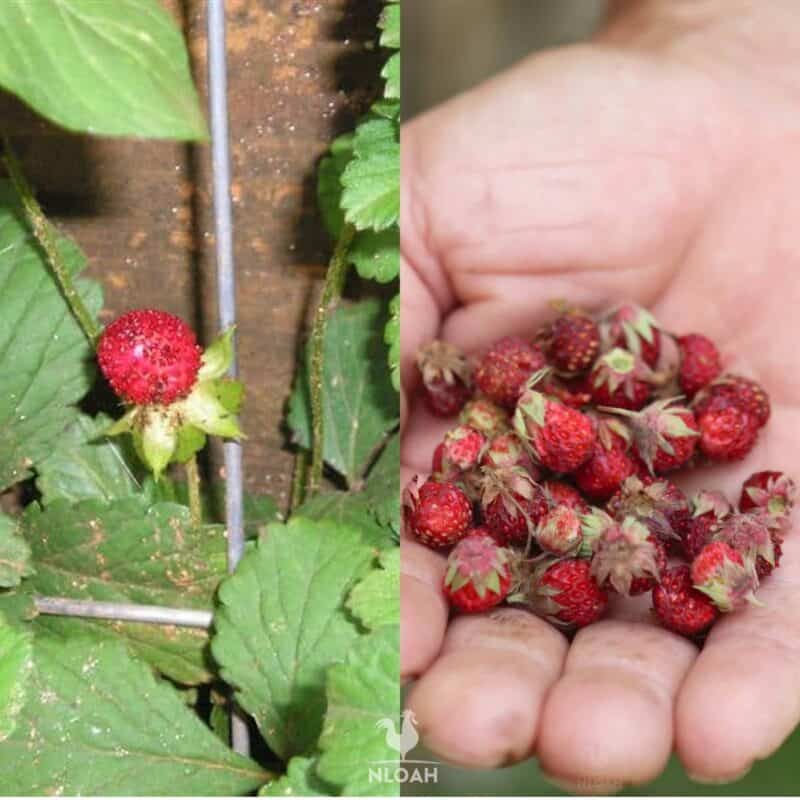If you live pretty much anywhere in the United States, chances are you’ve seen those tiny, cute little strawberries peek up their heads all over your backyard when summer comes.

You, like me, probably even have fond childhood memories of picking a few and eating them with your parents. What a novelty that was!
But what you might not know is that these little red strawberry look-alikes aren’t real strawberries. They are properly called “mock strawberries,” for obvious reasons!
But considering they aren’t strawberries at all, I guess we had better ask: are mock strawberries edible, and safe?
Yes, mock strawberries are safe to eat and completely edible but they don’t taste very good, and they aren’t very nutritious compared to actual wild and domestic strawberries.
Well, that’s good to know because I ate bunches of these things when I was a kid. If you have any mock strawberries growing on your property or if you find any growing out in the wilderness on your travels, you can grab them and chow down on them as a safe snack.
However, there’s a lot more you’ll need to know about these interesting plans before you do, so keep reading…
What are Mock Strawberries?
The mock strawberry, Potentilla indica, or sometimes also known as the Indian strawberry, backyard strawberries or, erroneously as wild strawberries, are a flowering plant that is most commonly found in North America, and one that has a composite accessory fruit that is quite similar in appearance and function to a true strawberry.
They are sometimes considered an invasive plant or a pesky weed, but more often than not, they’re just an interesting and festive herald of warm, summertime weather.
What Do Mock Strawberries Look Like?
Mock strawberries are low-growing, upturned plants that sprout from runners. They have trifoliate, roughly toothed and veiny leaves that serve as a crown for a small, dense and “pebbly” fruit that contains many seeds distributed across its surface. The fruits are rarely larger than a marble and often much smaller.
The flowers of the plant are yellow, first appearing in the springtime and then appearing sporadically throughout the growing season which lasts through the summer.
The flowers are yellow throughout with five petals and a bristly, brush-like center surrounded by a perimeter of taller stamens.

Telling Mock and Wild Strawberries Apart
Mock strawberries are sometimes confused for true wild strawberries, Fragaria vesca, and luckily both are edible.
The easiest way to tell mock strawberries and wild strawberries apart is through the flowers and the fruits: Mock strawberries have a smaller, denser fruit that has a distinctly bumpy or pebbly surface.
In contrast, a true wild strawberry is often significantly larger and the seeds, though distinct, are embedded more in the surface making it smoother to the touch even though it still has a distinct texture.
Then there is the matter of the flowers: mock strawberries have bright yellow flowers that are yellow throughout, whereas wild strawberries have white or faintly pink flowers that might be tinted at the margins and edges. Easy enough!
Also, the growth habit of each plant will give them away, with wild strawberries tending to grow significantly taller but the berries themselves droop or grow downward meaning they hang from beneath the plant as it curls over.
Mock strawberries always stick up proudly or else only tilting over at a slight angle, making them much easier to spot. You might have to look harder to spot the berries of wild strawberries since they could be hidden by their foliage!
How Do Mock Strawberries Smell?
Another giveaway between mock strawberries and the genuine article: mock strawberries have basically no fragrance at all, even when ripe, aside from a faint “grass” aroma. Strawberries, on the other hand, have that distinct and unmistakable smell which is so loved the world over.
Are Mock Strawberries Good to Eat?
Some people think so, and in any case they don’t taste bad. At worst, they have a somewhat bland or tasteless flavor.
At best, they have a vaguely tangy or fruity flavor that has often been compared favorably to various kinds of melon. Unfortunately, they don’t really taste like strawberries at all! You’ll just have to pick them and find out for yourself.
Also, the other parts of the plant, including the stems and leaves, are edible and the flowers are sometimes used in various herbal teas and tinctures.
Mock strawberries supposedly have various health-boosting benefits according to various schools of traditional medicine, but modern science so far has not backed these claims up.
Are Mock Strawberries Nutritious?
Somewhat, but their nutrition does not stack up favorably with other fruits or with true wild or domestic strawberries. They have some calories and are a marginal source of carbohydrates owing to their sugars, and also a decent source of vitamin A and vitamin C.
Note that, owing to their pronounced lack of popularity as produce they have not been extensively analyzed for nutritional content, though it is known they are completely safe to eat.
Beware of Any Mock Strawberries that Could Have Been Treated with Chemicals
Now, mock strawberries are themselves safe to eat but that doesn’t mean the particular ones you are contemplating picking are safe to eat!
This is because the plants are considered a nuisance or even an invasive species in some areas and so might be subjected to dedicated efforts to eradicate them through the use of herbicides.
Also, because they’re so commonly found in lawns around the country they could be incidentally contaminated with all sorts of things, from fertilizers and weed killers to various insecticides and soil conditioners.
And it isn’t out of the question that ones growing near the edges of farmlands and on the sides of roads could be contaminated with all sorts of stuff, from heavy metals found in exhaust to hazardous runoff from farms and industrial areas.
None of these contaminants are good for your health, so if you aren’t completely sure of the status of the mock strawberries you’re considering eating, or if you know that you have treated your lawn with various chemicals, it’s best to pass on them…
You won’t be missing out on much considering their paltry nutritional content. Better safe than sorry!
Tom has lived and worked on farms and homesteads from the Carolinas to Kentucky and beyond. He is passionate about helping people prepare for tough times by embracing lifestyles of self-sufficiency.
